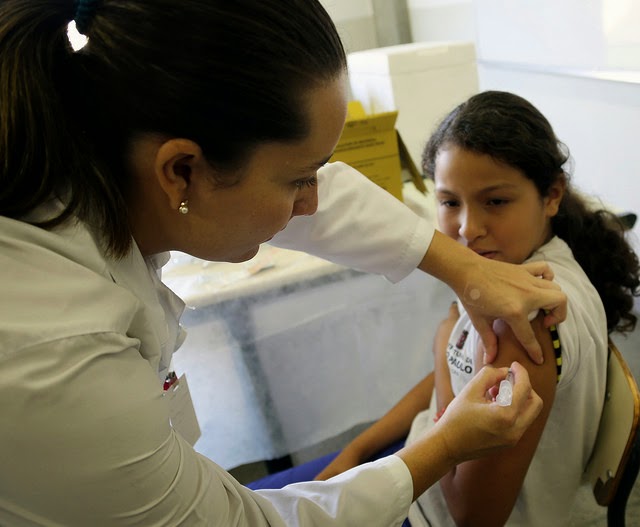 |
| Photo: Flickr/PAHOWHO |
by Sarah Cortez
HPV is a sexually transmitted infection, and we target the vaccine to 11-12 olds, as we expect children at this age to not be sexually active. This allows immunity to build up before any exposure to HPV occurs.
Though girls were the initial focus of the vaccine, it is now recommended that boys get vaccinated, too. Boys do not have cervices and, therefore, can’t get cervical cancer, but they certainly can get genital warts and the other rarer cancers linked to HPV. Importantly, males can also spread the cancer-causing virus to females.
As we have covered in previous posts, the use of the HPV vaccine has been slow to build in the US. But this is not the case in other countries.
A new study published in the open access journal PLOS ONE, details the effect of the Australian government’s national HPV vaccination program, using the Gardasil vaccine. Starting in 2007, the Australian government offered the HPV vaccine for free at school to all 11-12 year old girls on the standard schedule:
1. 1st dose at start
2. 2nd dose 1-2 months after 1st dose
3. 3rd dose 6 months after 1st dose
The Australian government also offered older schoolgirls (13-18 years old) and young adult women (18-26 year old) the vaccine for free through their general practitioners and community health clinics. This was referred to as the catch-up program due to the increased likelihood that patients were more likely to already be sexually active.
The decrease in genital warts seen in the sexual health clinic is great, but the sexual health clinics see many fewer patients than general practitioners. So was the decrease in genital wart diagnoses also found in the general population?
To find out, the new study used data collected from over 11,000 Australian general practitioners who saw at least some Medicaid patients. Once a year since 1998, each general practitioner recorded 100 patient encounters. This method logged over 1 million patient encounters between 2000 and 2012.
What was the result? Did the general practitioners find the same decrease in genital warts after the start of the HPV vaccination program?
The answer is yes. Genital warts were found most often in 15-27 year old males and females. Following the vaccination program, genital wart management decreased by 61% among 15-27 year old females. As a comparison, they tracked the rate of other STDs like genital herpes. As expected, the diagnoses of other STDs did not decrease following the vaccination program.
There was no change in males or the 27+ age group, which did not receive the vaccination.
All in all, this is great news. The HPV vaccine works. It decreases genital warts among those who are vaccinated, and hopefully, in the future, we can replicate here in the United States the success Australia has seen. As for us at CNiC, we will continue to report the findings and outcomes of this important preventative health tool.
Harrison C, Britt H, Garland S, Conway L, Stein A, Pirotta M, Fairly C. Decreased management of genital warts in young women in Australian general practice post introduction of national HPV vaccination program: Results from a nationally representative cross-sectional general practice study. PlosOne 2014; 9(9): e105967.
“Genital HPV Infection – Fact Sheet.” Centers for Disease Control and Prevention. Centers for Disease Control and Prevention, 20 Mar. 2014. Web. 12 Oct. 2014.
“National and State Vaccination Coverage Among Adolescents Aged 13–17 Years — United States, 2012.” Centers for Disease Control and Prevention. Centers for Disease Control and Prevention, 30 Aug. 2013. Web. 13 Oct. 2014.